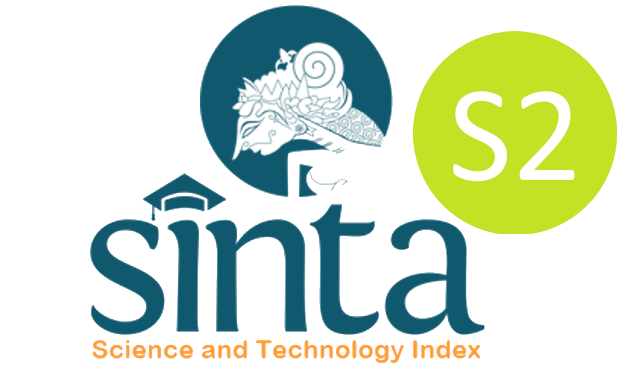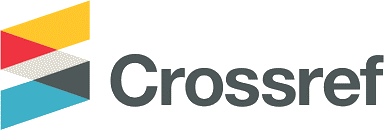Article Title
A Qualitative Study Exploring The Construct Of Student Well-Being In West Java High School Students
Abstract
Student well-being has become a significant goal and outcome of quality education. The “PROSPER (Positivity, Relationships, Outcomes, Strengths, Purpose, Engagement, Resilience) student well-being” is a framework that provides a holistic approach to improve student’s well-being. This study aimed to explore the construct of student well-being in the West Java high school population, based on the PROSPER framework. We focused on exploring high school students in urban areas. A qualitative study was conducted in three different language zones in West Java by using observations and interviews. The data were collected by six enumerators with a total of 108 students using a sequential approach thematic analysis. The study found that student well-being and its components were consistent with the framework. However, we proposed the subcomponents of student well-being and its definitions that reflect the unique characteristics of the population. The study also found that personal factors, social factors, and physical urban environments may influence well-being from students' perspectives. This study suggests that the PROSPER framework can be used to describe student well-being and also guides the government to develop educational policies and intervention programs at school.
References
Aris, A. S. P., & Djamhoer, T. D. (2011). Studi deskriptif student wellbeing pada siswa SMP Homeschooling Pewaris Bangsa Bandung. Prosiding Psikologi, 767–774.
Aulia, F., Hastjarjo, T. D., Setiyawati, D., & Patria, B. (2020). Student Well-being: A Systematic Literature Review. Buletin Psikologi, 28(1), 1–14. https://doi.org/10.22146/buletinpsikologi.42979
Azungah, T. (2018). Qualitative research: deductive and inductive approaches to data analysis. Qualitative Research Journal, 18(4), 383-400. https://doi.org/10.1108/QRJ-D-18-00035
Badan Pusat Statistik. (2010). Klasifikasi Perkotaan dan Perdesaan di Indonesia. Badan Pusat Statisistik Republik Indonesia, 13.
Braaten, A., Huta, V., Tyrany, L., & Thompson, A. (2019). Hedonic and eudaimonic motives toward university studies: How they relate to each other and to well-being derived from school. Journal of Positive Psychology and Wellbeing, 3(2), 179–196.
Ciarrochi, J., Atkins, P. W. B., Hayes, L. L., Sahdra, B. K., & Parker, P. (2016). Contextual positive psychology: Policy recommendations for implementing positive psychology into schools. Frontiers in Psychology, 7(OCT), 1–16. https://doi.org/10.3389/fpsyg.2016.01561
Clement, N. (2010). International Research Handbook on Values Education and Student Wellbeing. International Research Handbook on Values Education and Student Wellbeing, 37–62. https://doi.org/10.1007/978-90-481-8675-4
Conniff, A., & Craig, T. (2016). A methodological approach to understanding the wellbeing and restorative benefits associated with greenspace. Urban Forestry & Urban Greening, 19, 103-109.
Daddow, A., Cronshaw, D., Daddow, N., & Sandy, R. (2020). Hopeful cross-cultural encounters to support student well-being and graduate attributes in higher education. Journal of Studies in International Education, 24(4), 474–490. https://doi.org/10.1177/1028315319861362
Datu, J. A. D., & King, R. B. (2018). Subjective well-being is reciprocally associated with academic engagement: A two-wave longitudinal study. Journal of School Psychology, 69(July 2016), 100–110. https://doi.org/10.1016/j.jsp.2018.05.007
Diener, E. (2006). Guidelines for national indicators of subjective well-being and ill-being. Journal of Happiness Studies, 7(4), 397–404. https://doi.org/10.1007/s10902-006-9000-y
Firdausi, K. (2019). A literature review: The use of PROSPER model in guidance and counseling services for improving students' mental health. Social, Humanities, and Education Studies (SHEs): Conference Series, 2, 24–33. https://jurnal.uns.ac.id/shes
Fleckney, P., & Bentley, R. (2021). The urban public realm and adolescent mental health and wellbeing: A systematic review. Social Science & Medicine, 284, 114242.
Govorova, E., Benítez, I., & Muñiz, J. (2020). How schools affect student well-being: A cross-cultural approach in 35 OECD countries. Frontiers in Psychology, 11(March), 1–14. https://doi.org/10.3389/fpsyg.2020.00431
Jonas, A. E., McCann, E., & Thomas, M. (2015). Urban geography: a critical introduction. John Wiley & Sons.
Kioupi, V., & Voulvoulis, N. (2019). Education for sustainable development: A systemic framework for connecting the SDGs to educational outcomes. Sustainability (Switzerland), 11(21). https://doi.org/10.3390/su11216104
Koch, P. (2019). Subjective Well-Being in Indonesia: Evidence of Rural-Urban Differences in Life Satisfaction. [Master’s Thesis, Lund University]. http://lup.lub.lu.se/student-papers/record/8986909
Lewis, M., Takai-Kawakami, K., Kawakami, K., & Sullivan, M. W. (2010). Cultural differences in emotional responses to success and failure. International Journal of Behavioral Development, 34(1), 53–61. https://doi.org/10.1177/0165025409348559
Li, D., & Sullivan, W. C. (2016). Impact of views to school landscapes on recovery from stress and mental fatigue. Landscape and urban planning, 148, 149-158.
Liau, A. K., Neihart, M. F., Teo, C. T., & Lo, C. H. M. (2016). Effects of the best possible self activity on subjective well-being and depressive symptoms. Asia-Pacific Education Researcher, 25(3), 473–481. https://doi.org/10.1007/s40299-015-0272-z
Lubis, N. H. (2003). Sejarah Tatar Sunda (Vol. 1). Satya Historika. Bandung: Lembaga Penelitian UNPAD
Lyubomirsky, S., King, L., & Diener, E. (2005). The benefits of frequent positive affect: Does happiness lead to success? Psychological Bulletin, 131(6), 803–855. https://doi.org/10.1037/0033-2909.131.6.803
National Geographic. (2021). Urban area. Retrieved from https:// www.nationalgeographic.org/encyclopedia/urban-area/
Noble, T., & Mcgrath, H. (2016). The PROSPER School Pathways for Student Wellbeing. Policy and Practices. Springer International Publishing. https://doi.org/10.1007/978-3-319-21795-6
Noble, T., & McGrath, H. (2015). PROSPER: A new framework for positive education. Psychology of Well-Being, 5(1). https://doi.org/10.1186/s13612-015-0030-2
OECD. (2013). What makes urban schools different? PISA in Focus, 28, 1–4. http://www.oecd.org/pisa/pisaproducts/pisainfocus/pisa in focus n28 (eng)--FINAL.pdf
OECD. (2017). PISA 2015 Results (Volume III): Students’ Well-Being: Vol. III (A. Schleicher (ed.)). OECD Publishing. https://doi.org/10.1787/9789264273856-en
Oishi, S., & Gilbert, E. A. (2016). Current and future directions in culture and happiness research. Current Opinion in Psychology, 8(May 2016), 54–58. https://doi.org/10.1016/j.copsyc.2015.10.005
Omosehin, O., & Smith, A. P. (2019). Do cultural differences play a role in the relationship between time pressure, workload and student well-being? Human Mental Workload: Models and Applications, 3, 186–204. https://doi.org/10.1016/S0166-4115(08)62387-0
Pancheva, M. G., Ryff, C. D., & Lucchini, M. (2021). An integrated look at well-being: Topological clustering of combinations and correlates of hedonia and eudaimonia. Journal of Happiness Studies, 22(5), 2275–2297. https://doi.org/10.1007/s10902-020-00325-6
Pantić, N., & Wubbels, T. (2012). Teachers’ moral values and their interpersonal relationships with students and cultural competence. Teaching and Teacher Education, 28(3), 451–460. https://doi.org/10.1016/j.tate.2011.11.011
Pradhan, P., Costa, L., Rybski, D., Lucht, W., & Kropp, J. P. (2017). A systematic study of Sustainable Development Goal (SDG) interactions. Earth’s Future, 5(11), 1169–1179. https://doi.org/10.1002/2017EF000632
Rahayu, T. P. (2016). The Determinants of Happiness in Indonesia. Mediterranean Journal of Social Sciences, 7(2), 393–404. https://doi.org/10.5901/mjss.2016.v7n2p393
Salami, S. (2010). Emotional intelligence, self-efficacy, psychological well-being and students attitudes: Implications for quality education. European Journal of Educational Studies, 2(3), 247–257. http://www.ozelacademy.com/EJES_v2n3_8.pdf
Sanyata, S., Izzaty, R. E., & Gunawan, N. E. (2019). Exploring the concept of school mental health based on the prosper model. KnE Social Sciences, 2019, 226–241. https://doi.org/10.18502/kss.v3i17.4644
Seligman, M. (2018). PERMA and the building blocks of well-being. Journal of Positive Psychology, 13(4), 333–335. https://doi.org/10.1080/17439760.2018.1437466
Seligman, M. E. P., Ernst, R. M., Gillham, J., Reivich, K., & Linkins, M. (2009a). Positive education: Positive psychology and classroom interventions. Oxford Review of Education. https://doi.org/10.1080/03054980902934563
Seligman, M. E. P., Ernst, R. M., Gillham, J., Reivich, K., & Linkins, M. (2009b). Positive education: Positive psychology and classroom interventions. Oxford Review of Education, 35(3), 293–311. https://doi.org/10.1080/03054980902934563
Soutter, A. K., O’Steen, B., & Gilmore, A. (2014). The student well-being model: A conceptual framework for the development of student well-being indicators. International Journal of Adolescence and Youth, 19(4), 496–520. https://doi.org/10.1080/02673843.2012.754362
Tian, L., Zhao, J., & Huebner, E. S. (2015). School-related social support and subjective well-being in school among adolescents: The role of self-system factors. Journal of Adolescence, 45, 138–148. https://doi.org/10.1016/j.adolescence.2015.09.003
Tov, W., & Nai, Z. L. S. (2019). Cultural differences in subjective well-being. In Subjective Well-Being and Life Satisfaction (Issue June). https://doi.org/10.4324/9781351231879-3
Vázquez, C., Pérez-Sales, P., & Ochoa, C. (2014). Increasing psychological well-being in clinical and educational settings. Increasing Psychological Well-Being in Clinical and Educational Settings, 8(October), 57–74. https://doi.org/10.1007/978-94-017-8669-0
Waters, L., & Loton, D. (2019). SEARCH: A meta-framework and review of the field of positive education. International Journal of Applied Positive Psychology, 4(1–2), 1–46. https://doi.org/10.1007/s41042-019-00017-4
Wrench, A., Hammond, C., McCallum, F., & Price, D. (2013). Inspire to aspire: Raising aspirational outcomes through a student well-being curricular focus. International Journal of Inclusive Education, 17(9), 932–947. https://doi.org/10.1080/13603116.2012.718804
Recommended Citation
Dalimunthe, Karolina Lamtiur; Susanto, Hery; and Wedyaswari, Miryam
(2022)
"A Qualitative Study Exploring The Construct Of Student Well-Being In West Java High School Students,"
Psychological Research on Urban Society: Vol. 5:
No.
2, Article 1.
DOI: 10.7454/proust.v5i2.155
Available at:
https://scholarhub.ui.ac.id/proust/vol5/iss2/1







